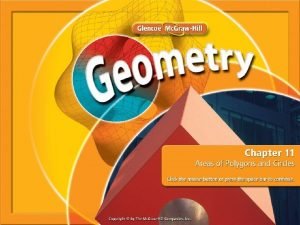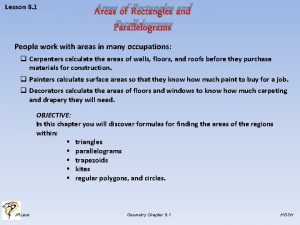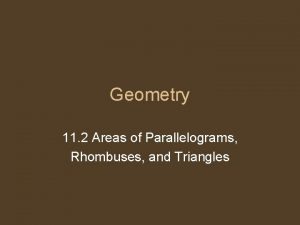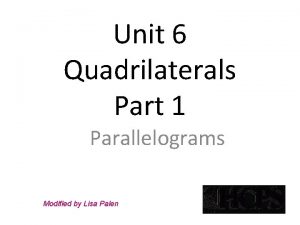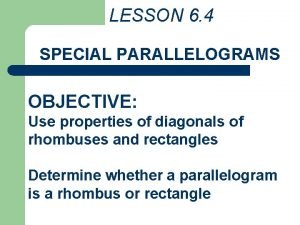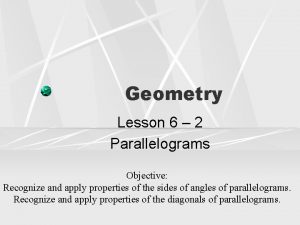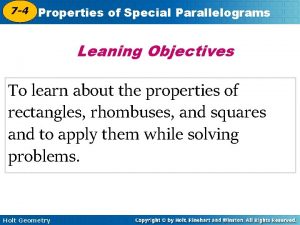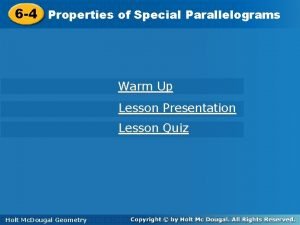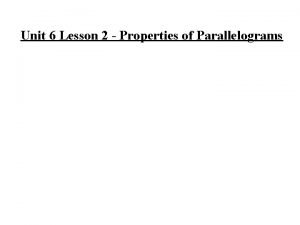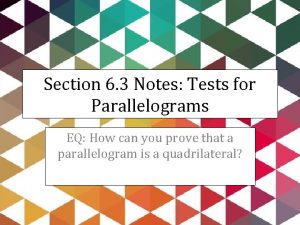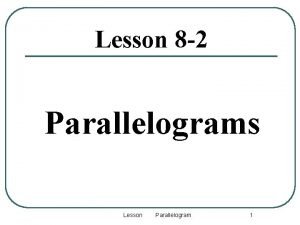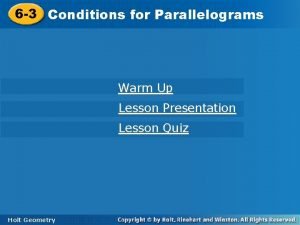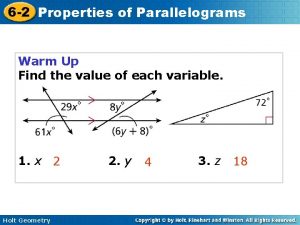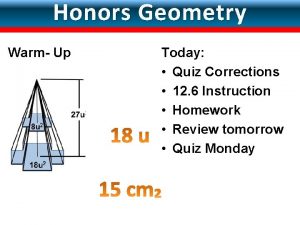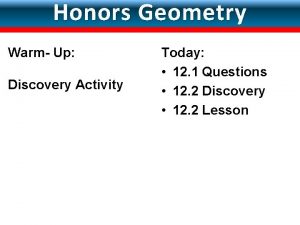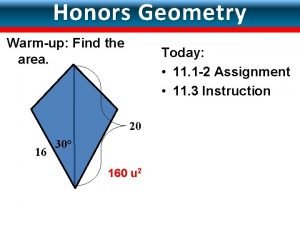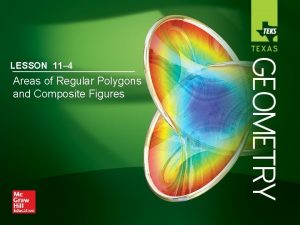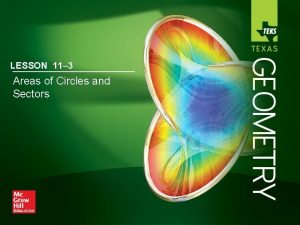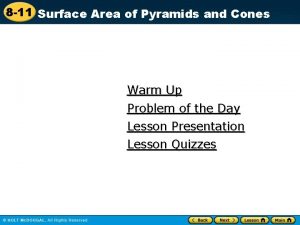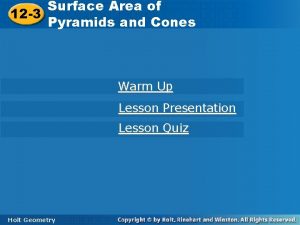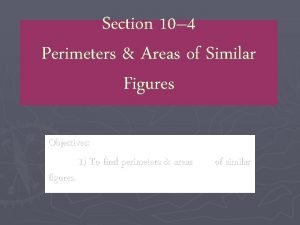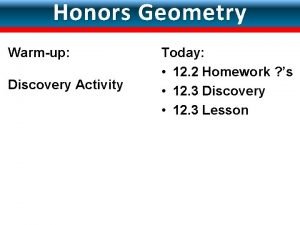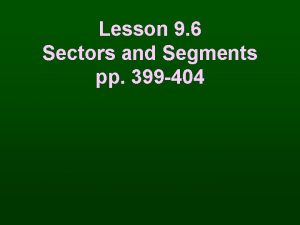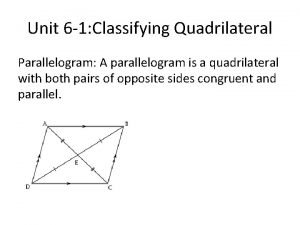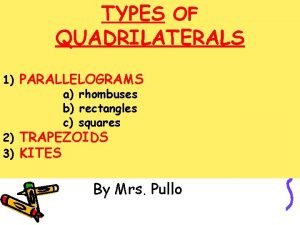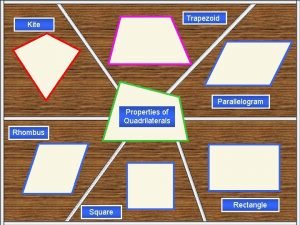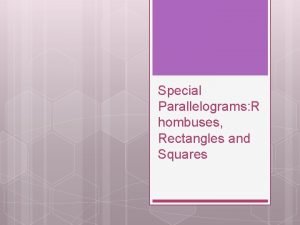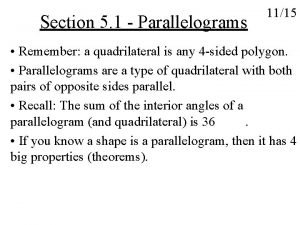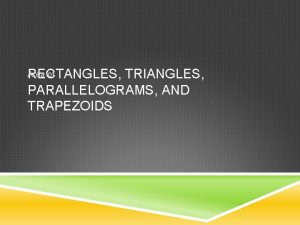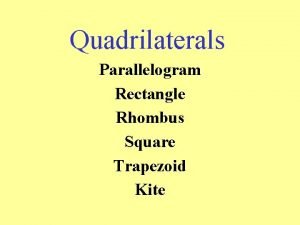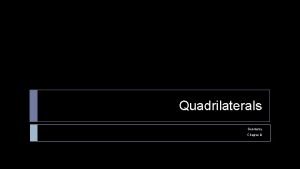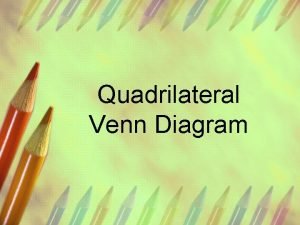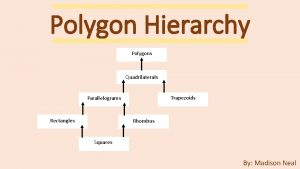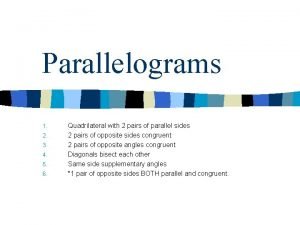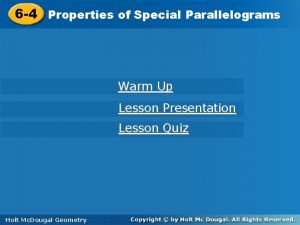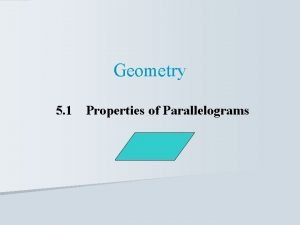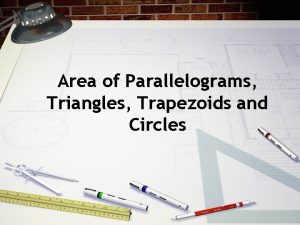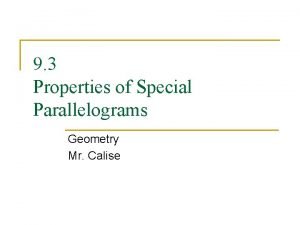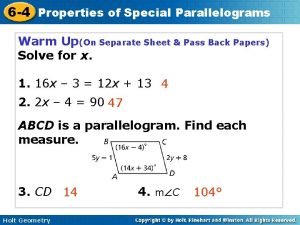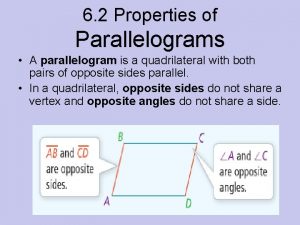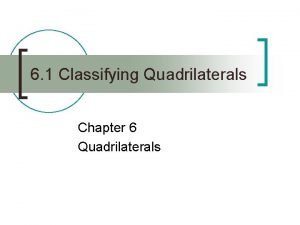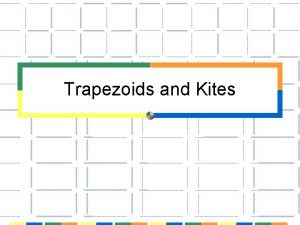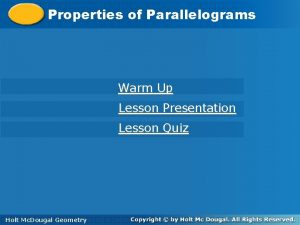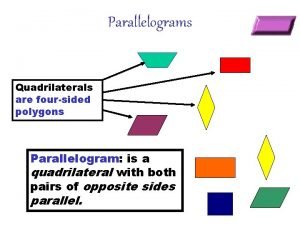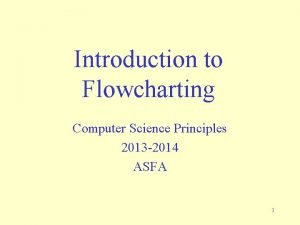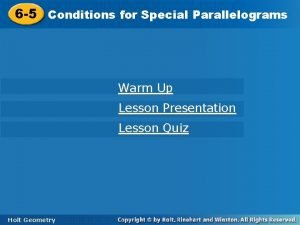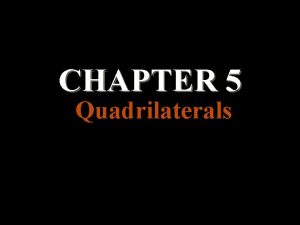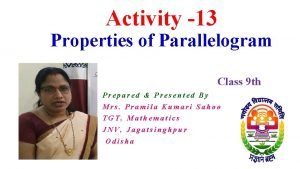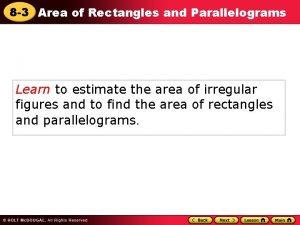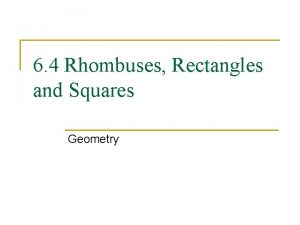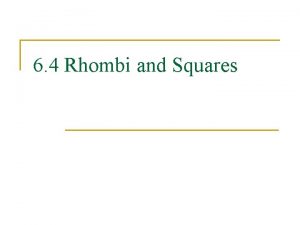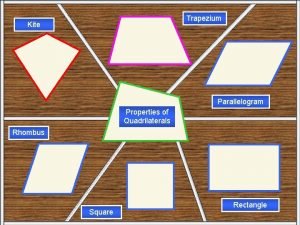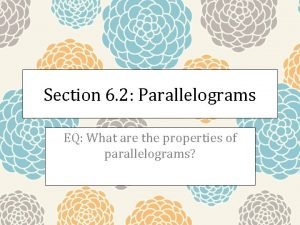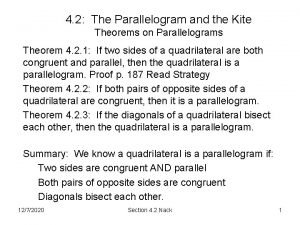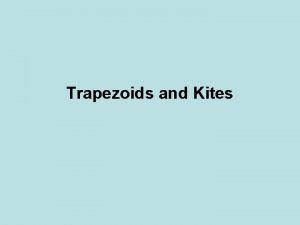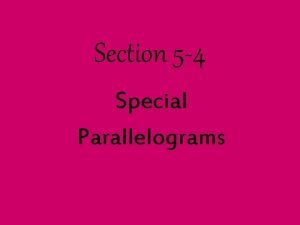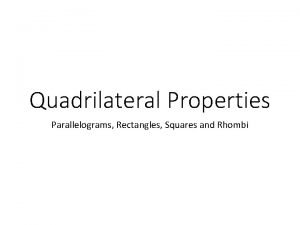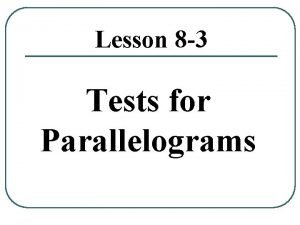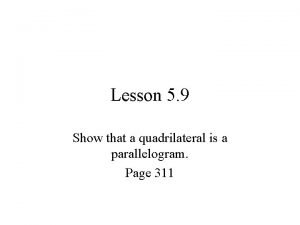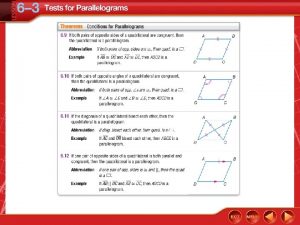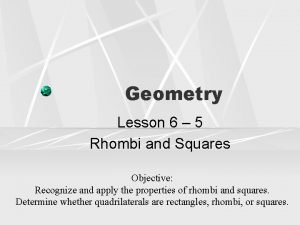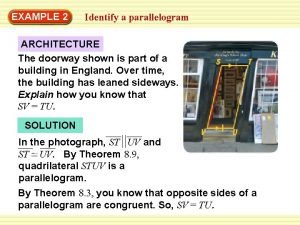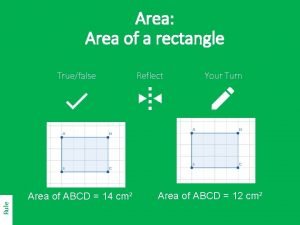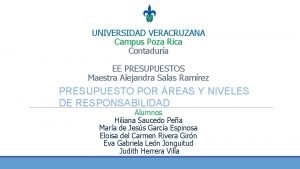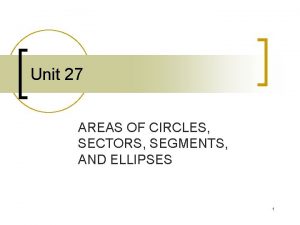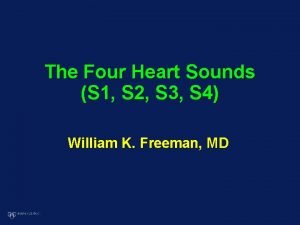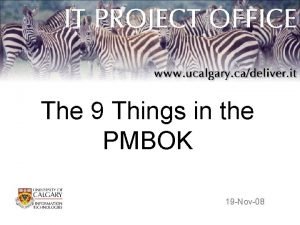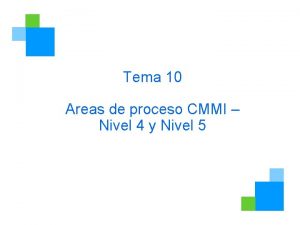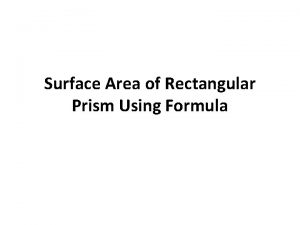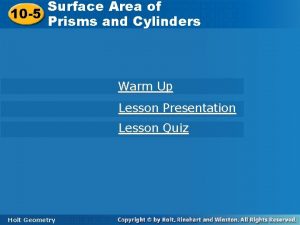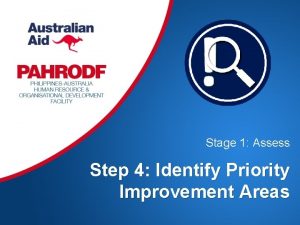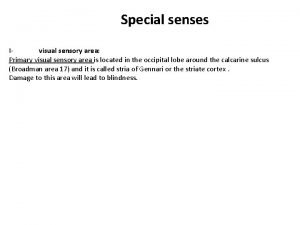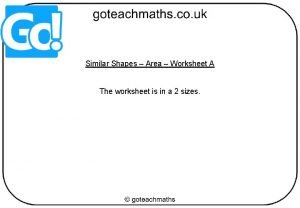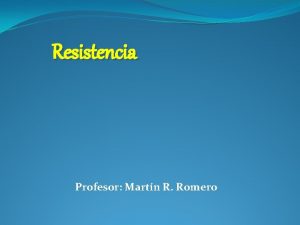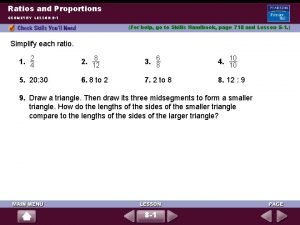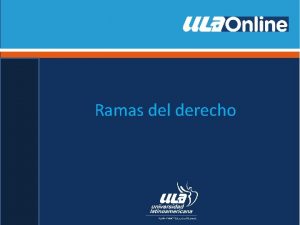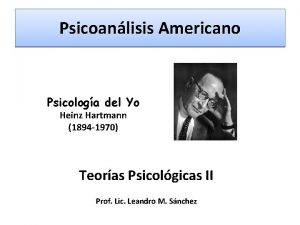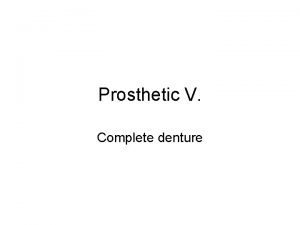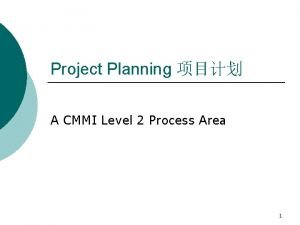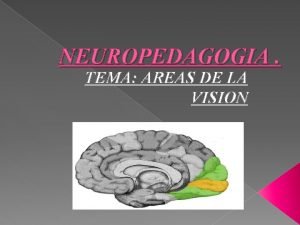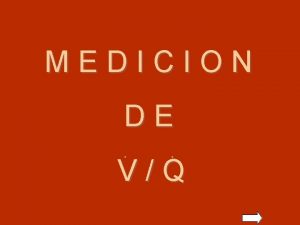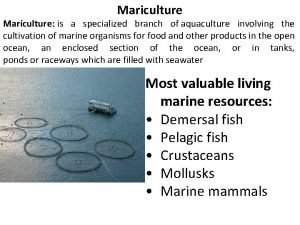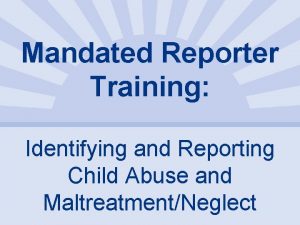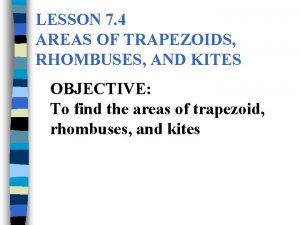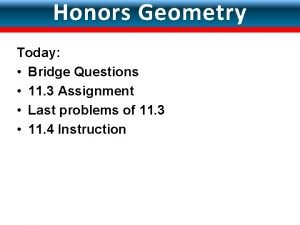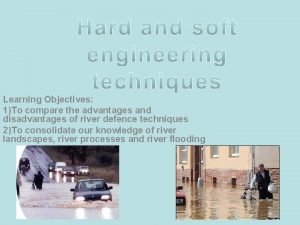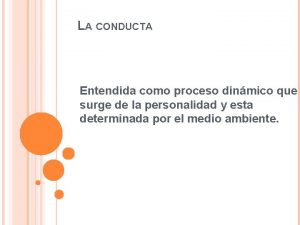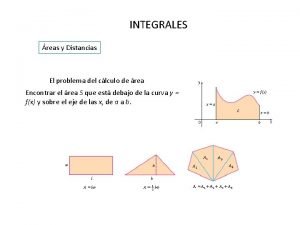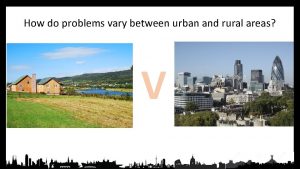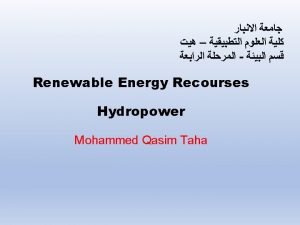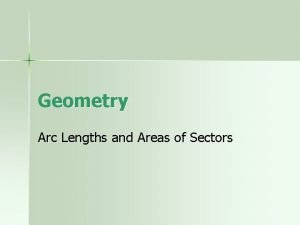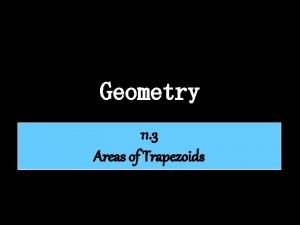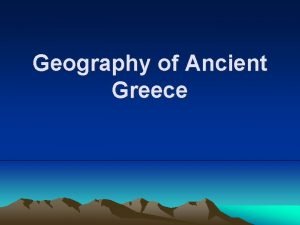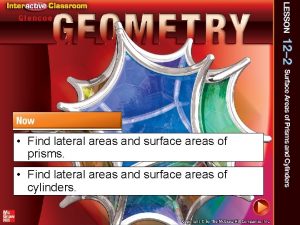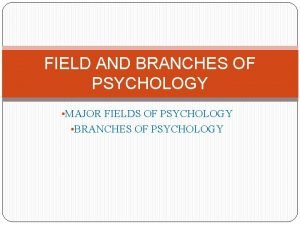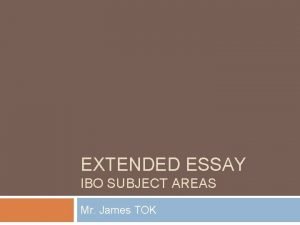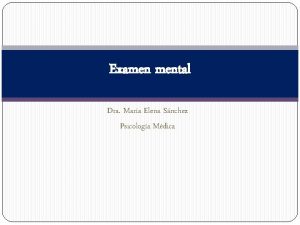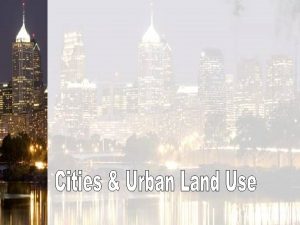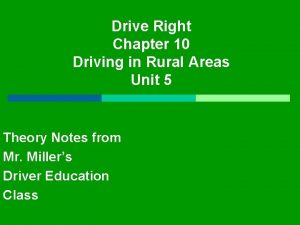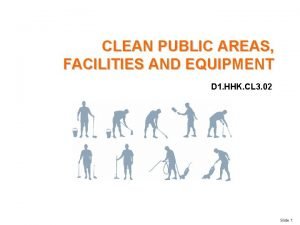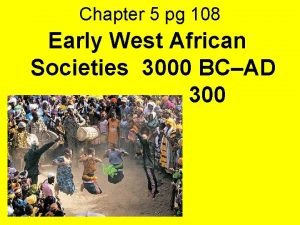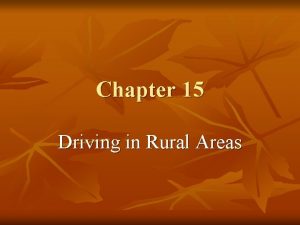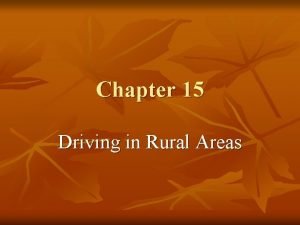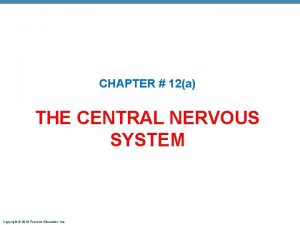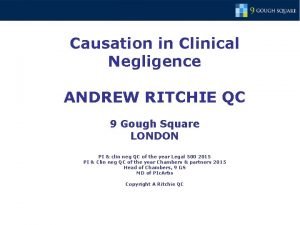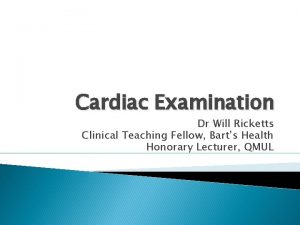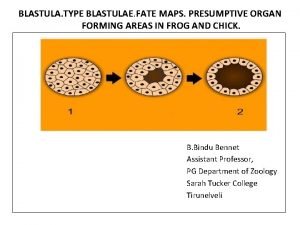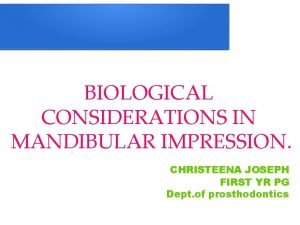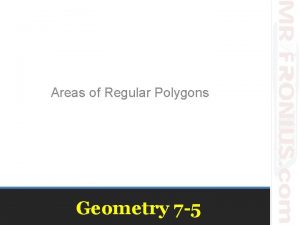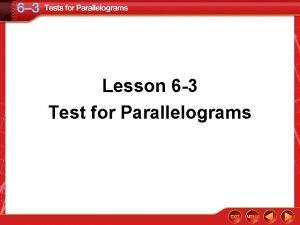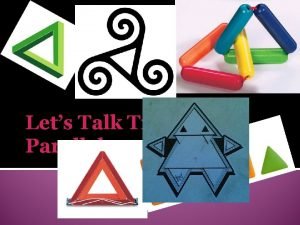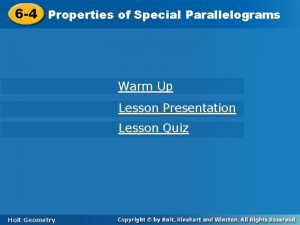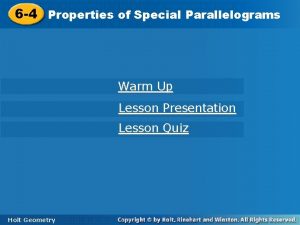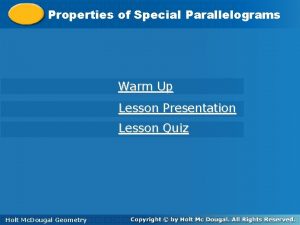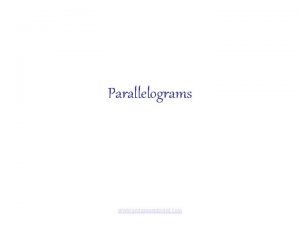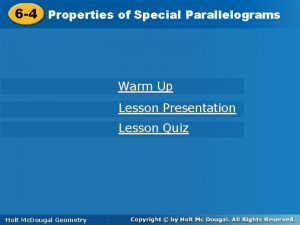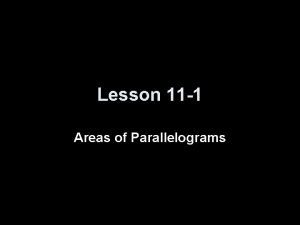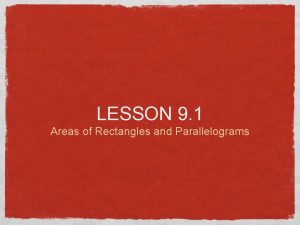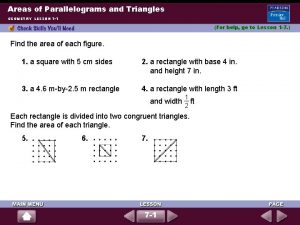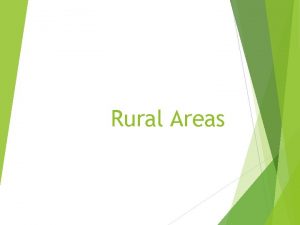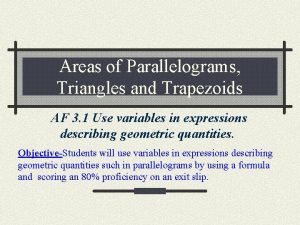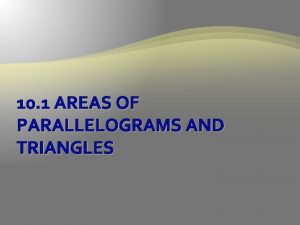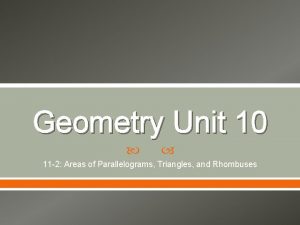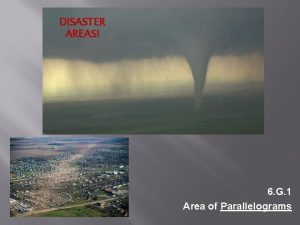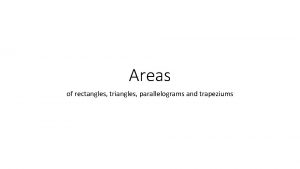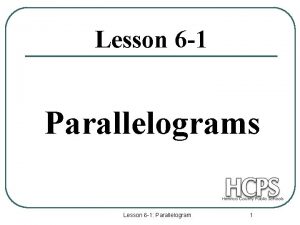Lesson 11 1 Areas of Parallelograms Lesson 11









































































































































- Slides: 137


Lesson 11 -1 Areas of Parallelograms Lesson 11 -2 Areas of Triangles, Trapezoids, and Rhombi Lesson 11 -3 Areas of Regular Polygons and Circles Lesson 11 -4 Areas of Composite Figures Lesson 11 -5 Geometric Probability and Areas of Sectors

Five-Minute Check (over Chapter 10) Main Ideas and Vocabulary Key Concept: Area of a Parallelogram Example 1: Perimeter and Area of a Parallelogram Example 2: Real-World Example 3: Perimeter and Area on the Coordinate Plane

• Find perimeters and areas of parallelograms. • Determine whether points on a coordinate plane define a parallelogram. • height of a parallelogram


Perimeter and Area of a Parallelogram Find the perimeter and area of Base and Side: Each pair of opposite sides of a parallelogram has the same measure. Each base is 32 inches long, and each side is 24 inches long.

Perimeter and Area of a Parallelogram Perimeter: The perimeter of a polygon is the sum of the measures of its sides. So, the perimeter of or 112 inches. Height: Use a 30 -60 -90 triangle to find the height. Recall that if the measure of the leg opposite the 30 angle is x, then the length of the hypotenuse is 2 x, and the length of the leg opposite the 60 angle is. Substitute 24 for the hypotenuse. Divide each side by 2. So, the height of the parallelogram is or inches.

Perimeter and Area of a Parallelogram Area: Area of a parallelogram Answer: The perimeter of is 112 inches, and the area is about 665. 1 square inches.

A. Find the perimeter of A. 48 m B. 45. 2 m C. 96 m D. 90. 4 m A. B. C. D. A B C D

B. Find the area of A. 18. 2 m 2 B. 381. 9 m 2 C. 567 m 2 D. 491. 0 m 2 A. B. C. D. A B C D

The Kanes want to sod a portion of their yard. Find the number of square yards of grass needed to sod the shaded region in the diagram. To find the number of square yards of grass needed, find the number of square yards of the entire lawn and subtract the number of square yards where grass will not be needed. Grass will not be needed for the vegetable garden, the garage, or the house and walkways.

Entire lawn: b = 200 ft, h = 150 ft Vegetable Garden: b = 50 ft, h = 40 ft Garage: b = 50 ft, h = 60 ft House and Walkways: b = 100 ft, h = 60 ft Area Entire Lawn Vegetable Garden A = bh Garage A = bh House and Walkways A = bh = 200 ● 150 = 50 ● 40 = 50 ● 60 = 100 ● 60 = 30, 000 ft 2 = 2000 ft 2 = 3000 ft 2 = 6000 ft 2

The total area is 30, 000 – 2000 – 3000 – 6000 or 19, 000 square feet. There are 9 square feet in one square yard, so divide by 9 to convert from square feet to square yards. Answer: They will need about 2111 square yards of sod.

The Wagners are planning to put hardwood floors in their dining room, living room, and kitchen. Find the number of square yards of wood needed. To the nearest whole number. A. 106 yd 2 B. 317 yd 2 C. 133 yd 2 D. 122 yd 2 1. 2. 3. 4. A B C D

Perimeter and Area on the Coordinate Plane A. The vertices of a quadrilateral are A(– 2, 3), B(4, 1), C(3, – 2), and D(– 3, 0). Determine whether the quadrilateral is a square, a rectangle, or a parallelogram. First graph each point and draw the quadrilateral. Then determine the slope of each side.

Perimeter and Area on the Coordinate Plane

Perimeter and Area on the Coordinate Plane Opposite sides have the same slope, so they are parallel. ABCD is a parallelogram. The slopes of the consecutive sides are negative reciprocals of each other, so the sides are perpendicular. Thus, the parallelogram is a rectangle. In order for the rectangle to be a square, all sides must be equal. Use the Distance Formula to find the side lengths.

Perimeter and Area on the Coordinate Plane Since , rectangle ABCD is not a square. Answer: rectangle

Perimeter and Area on the Coordinate Plane B. Find the perimeter of quadrilateral ABCD. For the previous question, we found that the figure is a rectangle by proving the opposite sides to be parallel and the consecutive sides to be perpendicular. To show that the figure was not a square, we found that the lengths of consecutive sides were not congruent. We found that Since opposite sides are congruent, the lengths of Add to find the perimeter.

Perimeter and Area on the Coordinate Plane Perimeter of Definition of perimeter Substitution Simplify radicals. Add like terms. Answer:

Perimeter and Area on the Coordinate Plane C. The vertices of a quadrilateral are A(– 2, 3), B(4, 1), C(3, – 2), and D(– 3, 0). Find the area of quadrilateral ABCD. Base: The base is AB, which we found to be. Height: The height is BC, which we found to be.

Perimeter and Area on the Coordinate Plane Area formula Multiply. Simplify. Answer: 20 square units

A. The vertices of a quadrilateral are A(– 1, 1), B(1, 4), C(5, 4), and D(3, 1). Determine whether the quadrilateral is a square, a rectangle, or a parallelogram. A. square B. rectangle C. parallelogram 1. 2. 3. A B C

B. The vertices of a quadrilateral are A(– 1, 1), B(1, 4), C(5, 4), and D(3, 1). Find the perimeter of quadrilateral ABCD. A. 14 units B. 15. 21 units C. 7. 61 units D. 12 units 1. 2. 3. 4. A B C D

C. The vertices of a quadrilateral are A(– 1, 1), B(1, 4), C(5, 4), and D(3, 1). Find the area of quadrilateral ABCD. A. 7 units 2 B. 14 units 2 C. 14. 42 units 2 D. 12 units 2 1. 2. 3. 4. A B C D


Five-Minute Check (over Lesson 11 -1) Main Ideas Key Concept: Area of a Triangle Example 1: Areas of Triangles Key Concept: Area of a Trapezoid Example 2: Area of a Trapezoid on a Coordinate Plane Key Concept: Area of a Rhombus Example 3: Area of a Rhombus on the Coordinate Plane Example 4: Find Missing Measures Postulate 11. 1 Example 5: Area of Congruent Figures

• Find areas of triangles. • Find areas of trapezoids and rhombi.


Areas of Triangles Find the area of quadrilateral ABCD if AC = 35, BF = 18, and DE = 10. The area of the quadrilateral is equal to the sum of the areas of Δ ΔADC Area formula Substitution Simplify. Answer: The area of ABCD is 490 square units.

Find the area of quadrilateral HIJK if IK = 16, HL = 5, and JM = 9. A. 46 units 2 B. 112 units 2 C. 720 units 2 D. 224 units 2 A. B. C. D. A B C D


Area of a Trapezoid on a Coordinate Plane Find the area of trapezoid RSTU with vertices R(4, 2), S(6, – 1), T(– 2, – 1), and U(– 1, 2). Bases: Since and are horizontal, find their length by subtracting the x-coordinates of their endpoints.

Area of a Trapezoid on a Coordinate Plane Height: Because the bases are horizontal segments, the distance between them can be measured on a vertical line. That is, subtract the y-coordinates. Area: Area of a trapezoid Simplify. Answer: The area of trapezoid RSTU is 19. 5 square units.

Find the area of trapezoid WXYZ with vertices W(– 3, 0), X(1, 0), Y(2, – 3), and Z(– 5, – 3). A. 33 units 2 B. 44 units 2 C. 18 units 2 D. 16. 5 units 2 1. 2. 3. 4. A B C D


Area of a Rhombus on the Coordinate Plane Find the area of rhombus MNPR with vertices at M(0, 1), N(4, 2), P(3, – 2), and R(– 1, – 3). Explore To find the area of the rhombus, we need to know the lengths of each diagonal. Plan Use coordinate geometry to find the length of each diagonal. Use the formula to find the area of rhombus MNPR.

Area of a Rhombus on the Coordinate Plane Solve � the Distance Formula to find Use . d 1 Use the Distance Formula to find d 2 .

Area of a Rhombus on the Coordinate Plane Area of a rhombus Check The area of rhombus MNPR is 15 square units. Answer: 15 square units

Find the area of rhombus ABCD with vertices A(– 3, 3), B(2, 2), C(3, – 3), and D(– 2, – 2). A. 12 units 2 B. 33. 9 units 2 C. 24 units 2 D. 48 units 2 1. 2. 3. 4. A B C D

Find Missing Measures Rhombus RSTU has an area of 64 square inches. Find US if RT = 8 inches. Use the formula for the area of a rhombus and solve for d 2. Answer: 16 inches

Trapezoid QRST has an area of 210 square yards. Find the height of QRST. A. 3 yd B. 6 yd C. 2. 1 yd D. 7 yd A. B. C. D. A B C D


Area of Congruent Figures STAINED GLASS This stained glass window is composed of 8 congruent trapezoidal shapes. The total area of the design is 72 square feet. Each trapezoid has bases of 3 and 6 feet. Find the height of each trapezoid. First, find the area of one trapezoid. From Postulate 11. 1, the area of each trapezoid is the same. So, the area of each trapezoid is or 9 square feet. Next, use the area formula to find the height of each trapezoid.

Area of Congruent Figures Area of a trapezoid Substitution Add. Multiply. Divide each side by 4. 5. Answer: Each trapezoid has a height of 2 feet.

INTERIOR DESIGN This window hanging is composed of 12 congruent trapezoidal shapes. The total area of the design is 216 square inches. Each trapezoid has bases of 4 and 8 inches. Find the height of each trapezoid. A. 3 in. B. 6 in. C. 2 in. D. 9 in. A. B. C. D. A B C D


Five-Minute Check (over Lesson 11 -2) Main Ideas and Vocabulary Key Concept: Area of a Regular Polygon Example 1: Area of a Regular Polygon Key Concept: Area of a Circle Example 2: Real-World Example 3: Area of an Inscribed Polygon

• Find areas of regular polygons. • Find areas of circles. • apothem


Area of a Regular Polygon Find the area of a regular pentagon with a perimeter of 90 meters.

Area of a Regular Polygon Apothem: The central angles of a regular pentagon are all congruent. Therefore, the measure of each angle is or 72. is an apothem of pentagon ABCDE. It bisects a perpendicular bisector of and is. So, or 36. Since the perimeter is 90 meters, each side is 18 meters and meters.

Area of a Regular Polygon Write a trigonometric ratio to find the length of . Multiply each side by GF. Divide each side by tan Use a calculator. .

Area of a Regular Polygon Area: Area of a regular polygon ≈ 557 Simplify. Answer: The area of the pentagon is about 557 square meters.

Find the area of a regular pentagon with a perimeter of 120 inches. To the nearest square inch. A. 890 in 2 B. 1225 in 2 C. 991 in 2 D. 1982 in 2 A. B. C. D. A B C D


An outdoor accessories company manufactures circular covers for outdoor umbrellas. If the cover is 8 inches longer than the umbrella on each side, find the area of the cover in square yards. The diameter of the umbrella is 72 inches, and the cover must extend 8 inches in each direction. So the diameter of the cover is 8 + 72 + 8 or 88 inches. Divide by 2 to find that the radius is 44 inches.

Area of a circle Substitution Use a calculator. The area of the cover is 6082. 1 square inches. To convert to square yards, divide by 1296. Answer: The area of the cover is 4. 7 square yards to the nearest tenth.

A swimming pool company manufactures circular covers for above ground pools. If the cover is 10 inches longer than the pool on each side, find the area of the cover in square yards. A. 31. 0 yd 2 B. 33. 8 yd 2 C. 1215. 1 yd 2 D. 43743. 5 yd 2 1. 2. 3. 4. A B C D

Area of an Inscribed Polygon Find the area of the shaded region. Assume that the triangle is equilateral. Round to the nearest tenth. The area of the shaded region is the difference between the area of the circle and the area of the triangle. First, find the area of the circle. Area of a circle Substitution Use a calculator.

Area of an Inscribed Polygon To find the area of the triangle, use properties of 30 -60 -90 triangles. First, find the length of the base. The hypotenuse of Δ so RS is 3. 5 and SZ. Since.

Area of an Inscribed Polygon Next, find the height of the triangle, XS. Since m 3. 5 Area of a triangle Use a calculator. Answer: The area of the shaded region is 153. 9 – 63. 7 or 90. 3 square centimeters to the nearest tenth.

Find the area of the shaded region. Assume that the triangle is equilateral. Round to the nearest tenth. A. 32. 5 in 2 B. 78. 5 in 2 C. 13. 6 in 2 D. 46. 1 in 2 1. 2. 3. 4. A B C D


Five-Minute Check (over Lesson 11 -3) Main Ideas and Vocabulary Postulate 11. 2 Example 1: Standardized Test Example: Area of a Composite Figure Example 2: Find the Area of a Composite Figure to Solve a Problem Example 3: Coordinate Plane

• Find areas of composite figures on the coordinate plane. • composite figure

Animation: Area of a Composite Figure

Area of a Composite Figure What is the area of the composite figure? Round to the nearest tenth. A 713. 1 ft 2 B 852. 5 ft 2 C 953. 1 ft 2 D 992 ft 2 Read the Test Item The figure can be separated into a rectangle with dimensions 16 feet by 32 feet, a triangle with a base of 32 feet and a height of 15 feet, and two semicircles with radii of 8 feet.

Area of a Composite Figure Solve the Test Item Area of composite figure Area formulas Substitution Simplify. Use a calculator. Answer: The area of the composite figure is 953. 1 square feet to the nearest tenth. The correct answer is C.

Find the area of the figure in square feet. Round to the nearest tenth if necessary. A. 478. 5 ft 2 B. 311. 2 ft 2 C. 351. 2 ft 2 D. 438. 5 ft 2 A. B. C. D. A B C D

Find the Area of a Composite Figure to Solve a Problem A rectangular rose garden is centered in a border of lawn. Find the area of the lawn around the garden in square feet. The length of the entire lawn is 25 + 100 + 25 or 150 feet. The width of the entire lawn is 25 + 20 + 25 or 70 feet. The length of the rose garden is 100 feet and the width is 20 feet.

Find the Area of a Composite Figure to Solve a Problem area of composite figure – area of rose garden Area formulas Substitution Simplify. Answer: The area of the lawn around the garden is 8500 square feet.

INTERIOR DESIGN Cara wants to wallpaper one wall of her family room. She has a fireplace in the center of the wall. Find the area of the wall around the fireplace. A. 168 ft 2 B. 156 ft 2 C. 204 ft 2 D. 180 ft 2 1. 2. 3. 4. A B C D

Coordinate Plane Find the area of polygon MNPQR. First, separate the figure into regions. Draw an auxiliary line perpendicular to from M (we will call this point S), an auxiliary line from N to the x-axis (we will call this point K), and an auxiliary line from P to the Origin, O. This divides the figure into triangle MRS, triangle NKM, trapezoid POKN and trapezoid PQSO.

Coordinate Plane Now, find the area of each of the figures. Find the difference between y-coordinates to find the lengths of the bases of the triangles and the lengths of the bases of the trapezoids. Find the difference between x-coordinates to find the heights of the triangles and trapezoids.

Coordinate Plane Δ Δ Area formulas Substitution Simplify. Answer: The area of polygon MNPQR is 44. 5 square units. Interactive Lab: Stained Glass Design, Polygons, and Area

Find the area of polygon ABCDE. A. 38 units 2 B. 17 units 2 C. 15 units 2 D. 19 units 2 1. 2. 3. 4. A B C D


Five-Minute Check (over Lesson 11 -4) Main Ideas and Vocabulary Key Concept: Probability and Area Example 1: Probability with Area Key Concept: Area of a Sector Example 2: Probability with Sectors Example 3: Probability with Segments

• Solve problems involving geometric probability. • Solve problems involving sectors and segments of circles. • geometric probability • sector • segment


Probability with Area A game board consists of a circle inscribed in a square. What is the chance that a dart thrown at the board will land on the board and in the shaded area? You want to find the probability of landing in the shaded area, not the circle.

Probability with Area We need to divide the area of the shaded region by the total area of the game board. The total area of the board is square inches. The area of the shaded region is the area of the total board minus the area of the circle. The area of the circle is Answer: The probability of throwing a dart onto the shaded area is

A square game board consists of shaded and non-shaded regions of equal width as shown. What is the chance that a dart thrown at the board will land in a shaded area? A. 0. 845 B. 0. 681 C. 0. 603 D. 0. 595 A. B. C. D. A B C D


Probability with Sectors A. Find the total area of the shaded sectors. The shaded sectors have degree measures of 45 and 35 or total. Use the formula to find the total area of the shaded sectors. Area of a sector Simplify. Answer: The area of the shaded sectors is or about 56. 5 square inches.

Probability with Sectors B. Find the probability that a point chosen at random lies in the shaded region. To find the probability, divide the area of the shaded sectors by the area of the circle. The area of the circle is with a radius of 9.

Probability with Sectors Geometric probability formula Simplify. Use a calculator. Answer: The probability that a random point is in the shaded sectors is

A. Find the area of the orange sectors. A. 50. 3 in 2 18 in. B. 67. 0 in 2 C. 16. 8 in 2 D. 5. 3 in 2 1. 2. 3. 4. A B C D

B. Find the probability that a point chosen at random lies in the orange region. 18 in. A. B. C. D. 1. 2. 3. 4. A B C D

Probability with Segments A. A regular hexagon is inscribed in a circle with a diameter of 12. Find the area of the shaded regions. Area of a sector: Area of a sector Simplify. Use a calculator. Use the center of the circle and two consecutive vertices of the hexagon to draw a triangle and find the area of one shaded segment.

Probability with Segments Area of a triangle: Since the hexagon was inscribed in the circle, the triangle is equilateral, with each side 6 units long. Use properties of 30 -60 -90 triangles to find the apothem. The value of x is 3 and the apothem is , which is approximately 5. 20.

Probability with Segments Next, use the formula for the area of a triangle. Area of a triangle Simplify. Area of segment: area of one segment area of sector ─ area of triangle Substitution Simplify.

Probability with Segments Since three segments are shaded, we will multiply this by 3. 3(3. 25) = 9. 78 Answer: The area of the shaded regions is about 9. 78 square units.

Probability with Segments B. A regular hexagon is inscribed in a circle with a diameter of 12. Find the probability that a point chosen at random lies in the shaded regions. Divide the area of the shaded regions by the area of the circle to find the probability. First, find the area of the circle. The radius is 6, so the area is or about 113. 10 square units.

Probability with Segments Answer: The probability that a random point is on the shaded region is about 0. 087 or 8. 7%.

A. A regular hexagon is inscribed in a circle with a diameter of 18. Find the area of the shaded regions. A. 133. 0 units 2 B. 166. 4 units 2 C. 44. 0 units 2 D. 93. 2 units 2 1. 2. 3. 4. A B C D

B. A regular hexagon is inscribed in a circle with a diameter of 18. Find the probability that a point chosen at random lies in the shaded regions. A. 19. 2% B. 17. 3% C. 23. 7% D. 9. 6% 1. 2. 3. 4. A B C D


Five-Minute Checks Image Bank Math Tools Area of a Composite Figure Stained Glass Design, Polygons, and Area

Lesson 11 -1 (over Chapter 10) Lesson 11 -2 (over Lesson 11 -1) Lesson 11 -3 (over Lesson 11 -2) Lesson 11 -4 (over Lesson 11 -3) Lesson 11 -5 (over Lesson 11 -4)

To use the images that are on the following three slides in your own presentation: 1. Exit this presentation. 2. Open a chapter presentation using a full installation of Microsoft® Power. Point® in editing mode and scroll to the Image Bank slides. 3. Select an image, copy it, and paste it into your presentation.





(over Chapter 10) Name a radius. A. CD B. CB C. OC D. CA A. B. C. D. A B C D

(over Chapter 10) Name a chord. A. OC B. AD C. OA D. OD 1. 2. 3. 4. A B C D

(over Chapter 10) Name a diameter. A. CO B. CA C. CB D. CD 1. 2. 3. 4. A B C D

(over Chapter 10) Find if m ACB = 80. A. 40 B. 80 C. 160 D. 280 A. B. C. D. A B C D

(over Chapter 10) Write an equation of the circle with center at (– 3, 2) and a diameter of 6. A. (x – 3)2 + (y + 2)2 = 9 B. (x + 3)2 + (y – 2)2 = 9 C. (x + 3)2 + (y – 2)2 = 81 D. (x – 3)2 + (y + 2)2 = 81 1. 2. 3. 4. A B C D

(over Chapter 10) Which word best describes RS? A. chord B. arc C. diameter D. radius 1. 2. 3. 4. A B C D

(over Lesson 11 -1) Find the perimeter and area of the parallelogram. Round to the nearest tenth if necessary. A. 24 cm, 143 cm 2 B. 24 cm, 101. 1 cm 2 C. 48 cm, 143 cm 2 D. 48 cm, 101. 1 cm 2 A. B. C. D. A B C D

(over Lesson 11 -1) Find the perimeter and area of the parallelogram in the figure. Round to the nearest tenth if necessary. A. 29 ft, 102 ft 2 B. 58 ft, 204 ft 2 C. 58 ft, 102 ft 2 1. D. 29 ft, 204 ft 2 2. 3. 4. A B C D

(over Lesson 11 -1) Find the perimeter and area of the parallelogram. Round to the nearest tenth if necessary. A. 58 in. , 171. 5 in 2 B. 29 in. , 198 in 2 C. 58 in 2, 198 in 2 D. 29 in. , 171. 5 in 2 1. 2. 3. 4. A B C D

(over Lesson 11 -1) Find the perimeter and area of the parallelogram. Round to the nearest tenth if necessary. A. 25. 2 m, 56. 1 m 2 B. 35. 6 m, 79. 2 m 2 C. 35. 6 m, 56. 1 m 2 D. 25. 2 m, 39. 7 m 2 A. B. C. D. A B C D

(over Lesson 11 -1) Find the height and base of the parallelogram if the area is 168 square units. A. 12 units, 14 units B. 14 units, 16 units C. 10 units, 12 units D. 12 units, 16 units 1. 2. 3. 4. A B C D

(over Lesson 11 -1) Find the area of a parallelogram if the height is 8 centimeters and the base length is 10. 2 centimeters. A. 28. 4 cm 2 B. 29. 2 cm 2 C. 81. 6 cm 2 D. 104. 04 cm 2 1. 2. 3. 4. A B C D

(over Lesson 11 -2) Find the area of the figure. Round to the nearest tenth if necessary. A. 396 units 2 B. 198 units 2 C. 99 units 2 D. 20 units 2 A. B. C. D. A B C D

(over Lesson 11 -2) Find the area of the figure. Round to the nearest tenth if necessary. A. 166. 3 units 2 B. 144 units 2 C. 83. 1 units 2 D. 48 units 2 1. 2. 3. 4. A B C D

(over Lesson 11 -2) Find the area of the figure. Round to the nearest tenth if necessary. A. 39 units 2 B. 48 units 2 C. 78 units 2 D. 96 units 2 1. 2. 3. 4. A B C D

(over Lesson 11 -2) Find the area of the figure. Round to the nearest tenth if necessary. A. 468 units 2 B. 234 units 2 C. 117 units 2 D. 59 units 2 A. B. C. D. A B C D

(over Lesson 11 -2) Trapezoid LMNO has an area of 55 square units. Find the height. A. 5 units B. 6 units C. 10 units D. 14 units 1. 2. 3. 4. A B C D

(over Lesson 11 -2) Rhombus ABCD has an area of 144 square inches. Find AC if BD = 16 inches. A. 8 in. B. 9 in. C. 16 in. D. 18 in. 1. 2. 3. 4. A B C D

(over Lesson 11 -3) Find the area of a regular hexagon with side length of 8 centimeters. Round to the nearest tenth if necessary. A. 332. 5 cm 2 B. 192 cm 2 C. 166. 3 cm 2 D. 48 cm 2 A. B. C. D. A B C D

(over Lesson 11 -3) Find the area of a square with an apothem length of 14 inches. Round to the nearest tenth if necessary. A. 1568 in 2 B. 784 in 2 C. 392 in 2 D. 196 in 2 1. 2. 3. 4. A B C D

(over Lesson 11 -3) Find the area of a regular triangle with side length of 18. 6 meters. Round to the nearest tenth if necessary. A. 346 m 2 B. 299. 6 m 2 C. 173 m 2 D. 149. 8 m 2 1. 2. 3. 4. A B C D

(over Lesson 11 -3) Find the area of the shaded region to the nearest tenth. Assume that the polygon is regular. A. 51. 4 units 2 B. 78. 6 units 2 C. 131. 1 units 2 D. 182. 5 units 2 A. B. C. D. A B C D

(over Lesson 11 -3) Find the area of the shaded region to the nearest tenth. Assume that the polygon is regular. A. 254. 6 units 2 B. 162. 0 units 2 C. 127. 3 units 2 D. 92. 5 units 2 1. 2. 3. 4. A B C D

(over Lesson 11 -3) Find the area of a circle with a diameter of 8 inches. A. 4 in 2 B. 8 in 2 C. 16 in 2 D. 64 in 2 1. 2. 3. 4. A B C D

(over Lesson 11 -4) Find the area of the figure. Round to the nearest tenth if necessary. A. 179. 2 units 2 B. 140 units 2 C. 100. 7 units 2 D. 63. 1 units 2 A. B. C. D. A B C D

(over Lesson 11 -4) Find the area of the figure. Round to the nearest tenth if necessary. A. 104 units 2 B. 121 units 2 C. 165 units 2 D. 330 units 2 1. 2. 3. 4. A B C D

(over Lesson 11 -4) Find the area of the figure. Round to the nearest tenth if necessary. A. 120 units 2 B. 108 units 2 C. 84 units 2 D. 72 units 2 1. 2. 3. 4. A B C D

(over Lesson 11 -4) Find the area of the figure. Round to the nearest tenth if necessary. A. 109. 1 units 2 B. 117. 7 units 2 C. 168 units 2 D. 218. 24 units 2 A. B. C. D. A B C D

(over Lesson 11 -4) Find the area of the figure. A. 6 units 2 B. 12 units 2 C. 14. 43 units 2 D. 24 units 2 1. 2. 3. 4. A B C D

(over Lesson 11 -4) Find the area of the figure. A. 112 units 2 B. 136. 8 units 2 C. 162. 3 units 2 D. 212. 5 units 2 1. 2. 3. 4. A B C D

This slide is intentionally blank.
 Lesson 11-1 areas of parallelograms and triangles answers
Lesson 11-1 areas of parallelograms and triangles answers Lesson 8.1 areas of rectangles and parallelograms answers
Lesson 8.1 areas of rectangles and parallelograms answers Find the area of each rhombus
Find the area of each rhombus Unit 6 quadrilaterals
Unit 6 quadrilaterals 6-4 special parallelograms rectangles
6-4 special parallelograms rectangles Lesson 6-2 parallelograms
Lesson 6-2 parallelograms Properties of special parallelograms
Properties of special parallelograms 6-4 special parallelograms
6-4 special parallelograms How do you find the height of a parallelogram
How do you find the height of a parallelogram Lesson 6-3 tests for parallelograms answers
Lesson 6-3 tests for parallelograms answers 6-1 lesson quiz geometry
6-1 lesson quiz geometry 6-3 lesson quiz properties of parallelograms
6-3 lesson quiz properties of parallelograms Lesson 6-5 conditions for special parallelograms
Lesson 6-5 conditions for special parallelograms Lesson 2 properties of parallelograms
Lesson 2 properties of parallelograms Unit 6 lesson 6 surface areas and volumes of spheres
Unit 6 lesson 6 surface areas and volumes of spheres Lesson 12-2 surface areas of prisms and cylinders
Lesson 12-2 surface areas of prisms and cylinders Lesson 7: areas of circles and sectors
Lesson 7: areas of circles and sectors Lesson 11-4 areas of regular polygons and composite figures
Lesson 11-4 areas of regular polygons and composite figures Lesson 11-3 areas of circles and sectors
Lesson 11-3 areas of circles and sectors Surface areas of pyramids and cones
Surface areas of pyramids and cones 11-3 surface areas of pyramids and cones
11-3 surface areas of pyramids and cones Similar image
Similar image Lesson 11-3 surface areas of pyramids and cones
Lesson 11-3 surface areas of pyramids and cones Lesson 9 arc length and areas of sectors
Lesson 9 arc length and areas of sectors Classifying parallelograms
Classifying parallelograms Graphic organizer of quadrilaterals
Graphic organizer of quadrilaterals Kite vs rhombus
Kite vs rhombus What is parallelogram
What is parallelogram Parallelogram reason
Parallelogram reason Area rectangles triangles parallelograms trapezoids
Area rectangles triangles parallelograms trapezoids Parallelogram with 4 right angles
Parallelogram with 4 right angles Quiz 8-1 angles of polygons and parallelograms
Quiz 8-1 angles of polygons and parallelograms Quadrilateral diagram
Quadrilateral diagram Hierarchy polygons
Hierarchy polygons Characteristics of a parallelogram
Characteristics of a parallelogram 6-4 special parallelograms
6-4 special parallelograms 8-3 skills practice tests for parallelograms answers
8-3 skills practice tests for parallelograms answers 5-1 properties of parallelograms
5-1 properties of parallelograms Area of parallelograms triangles and trapezoids
Area of parallelograms triangles and trapezoids Parallelogram with four right angles
Parallelogram with four right angles 6-4 special parallelograms
6-4 special parallelograms Properties of parallelograms 6-2
Properties of parallelograms 6-2 Practice 6-1 classifying quadrilaterals answers
Practice 6-1 classifying quadrilaterals answers Rstu is a kite, , and . find .
Rstu is a kite, , and . find . Hierarchy of quadrilaterals
Hierarchy of quadrilaterals Quiz 8-2 parallelograms
Quiz 8-2 parallelograms Are parallelograms polygons
Are parallelograms polygons The operation represented by parallelograms in flowchart
The operation represented by parallelograms in flowchart 6-5 conditions for special parallelograms
6-5 conditions for special parallelograms 5 quadrilaterals
5 quadrilaterals Properties of parallelogram class 9th
Properties of parallelogram class 9th Area of rectangles and parallelograms
Area of rectangles and parallelograms Theorem of rectangle
Theorem of rectangle 6-5 practice rhombi and squares
6-5 practice rhombi and squares Conditions for parallelograms
Conditions for parallelograms What are special parallelograms
What are special parallelograms Rhombus and a parallelogram
Rhombus and a parallelogram Find m∠lmn in parallelogram lmnq.
Find m∠lmn in parallelogram lmnq. Purple parallelogram
Purple parallelogram Kites and trapezoids are parallelograms
Kites and trapezoids are parallelograms 5 properties of a rectangle
5 properties of a rectangle Special parallelograms
Special parallelograms Parallelogram shape
Parallelogram shape Parallelogram non-examples
Parallelogram non-examples Determine whether quadrilateral is a parallelogram
Determine whether quadrilateral is a parallelogram 6-5 rhombi and squares practice answers
6-5 rhombi and squares practice answers Quadrilateral stuv where st uv
Quadrilateral stuv where st uv Rectangle rule
Rectangle rule In 1914 who controlled the shaded areas on the map
In 1914 who controlled the shaded areas on the map Vce drama study design
Vce drama study design Presupuesto por áreas ejemplo
Presupuesto por áreas ejemplo Frustum of square pyramid
Frustum of square pyramid 11-3 areas of circles and sectors answer key
11-3 areas of circles and sectors answer key Domain occupational therapy
Domain occupational therapy S1 is loudest at the base of the heart
S1 is loudest at the base of the heart 9 knowledge areas of pmbok
9 knowledge areas of pmbok Que proceso es
Que proceso es Harley nadler
Harley nadler Net of a rectangular prism
Net of a rectangular prism 10-4 surface area of prisms and cylinders
10-4 surface area of prisms and cylinders Zeus weaknesses
Zeus weaknesses Mamillated areas
Mamillated areas Stage right vs stage left
Stage right vs stage left Priority improvement areas
Priority improvement areas Ivisual
Ivisual Similar shapes and proportions worksheet
Similar shapes and proportions worksheet Seven areas of technology
Seven areas of technology Areas funcionales anaerobicas
Areas funcionales anaerobicas Geothermal energy advantages
Geothermal energy advantages Practice 8-1 ratios and proportions
Practice 8-1 ratios and proportions Areas del derecho
Areas del derecho Heinz hartmann psicologia del yo
Heinz hartmann psicologia del yo Liaise between kitchen and dining area
Liaise between kitchen and dining area Tried
Tried Cmmi level 2 process areas
Cmmi level 2 process areas Agora vamos subtrair as areas abaixo
Agora vamos subtrair as areas abaixo Turf areas in xeriscaping designs should be seeded in
Turf areas in xeriscaping designs should be seeded in Primary areas of business
Primary areas of business Patrick nunes leite
Patrick nunes leite Technician a says that a hoist can be stopped
Technician a says that a hoist can be stopped Areas del ojo
Areas del ojo What are national core standards?
What are national core standards? Areas de west pulmon
Areas de west pulmon Role of industrial estates
Role of industrial estates Major fishing areas of the world
Major fishing areas of the world Normal bruising areas on a child
Normal bruising areas on a child 10-2 areas of trapezoids rhombuses and kites
10-2 areas of trapezoids rhombuses and kites 11-4 areas of regular polygons answers
11-4 areas of regular polygons answers Disadvantages of floodplain
Disadvantages of floodplain Ejemplos de coincidencia de áreas de la conducta
Ejemplos de coincidencia de áreas de la conducta Areas y distancias integrales
Areas y distancias integrales Difference between a rural and urban area
Difference between a rural and urban area Gsp focus areas
Gsp focus areas Naturally occurring areas of hydrothermal resources
Naturally occurring areas of hydrothermal resources Arc length geometry
Arc length geometry 11-3 areas of trapezoids answers
11-3 areas of trapezoids answers Ancient greek map
Ancient greek map Octagonal prism surface area
Octagonal prism surface area Areas of psychology
Areas of psychology Ee subject areas
Ee subject areas Alopsiquia
Alopsiquia Desventajas de corel presentations
Desventajas de corel presentations Urban hearths
Urban hearths Chapter 10 driving in rural areas worksheet answers
Chapter 10 driving in rural areas worksheet answers Cleaning public areas facilities and equipment
Cleaning public areas facilities and equipment Food and beverage service areas
Food and beverage service areas A strip of land that divides the desert from wetter areas
A strip of land that divides the desert from wetter areas The sample learning areas that can be used in research
The sample learning areas that can be used in research Chapter 15 driving in rural areas
Chapter 15 driving in rural areas Chapter 15 driving in rural areas
Chapter 15 driving in rural areas Multimodal association areas
Multimodal association areas How does globalization affect the world
How does globalization affect the world Andrew ritchie qc
Andrew ritchie qc Parasternal heave
Parasternal heave Coeloblastula diagram
Coeloblastula diagram Mandibular impression landmarks
Mandibular impression landmarks Tabela de areas arquitetura
Tabela de areas arquitetura Practice 7-5 areas of regular polygons
Practice 7-5 areas of regular polygons
